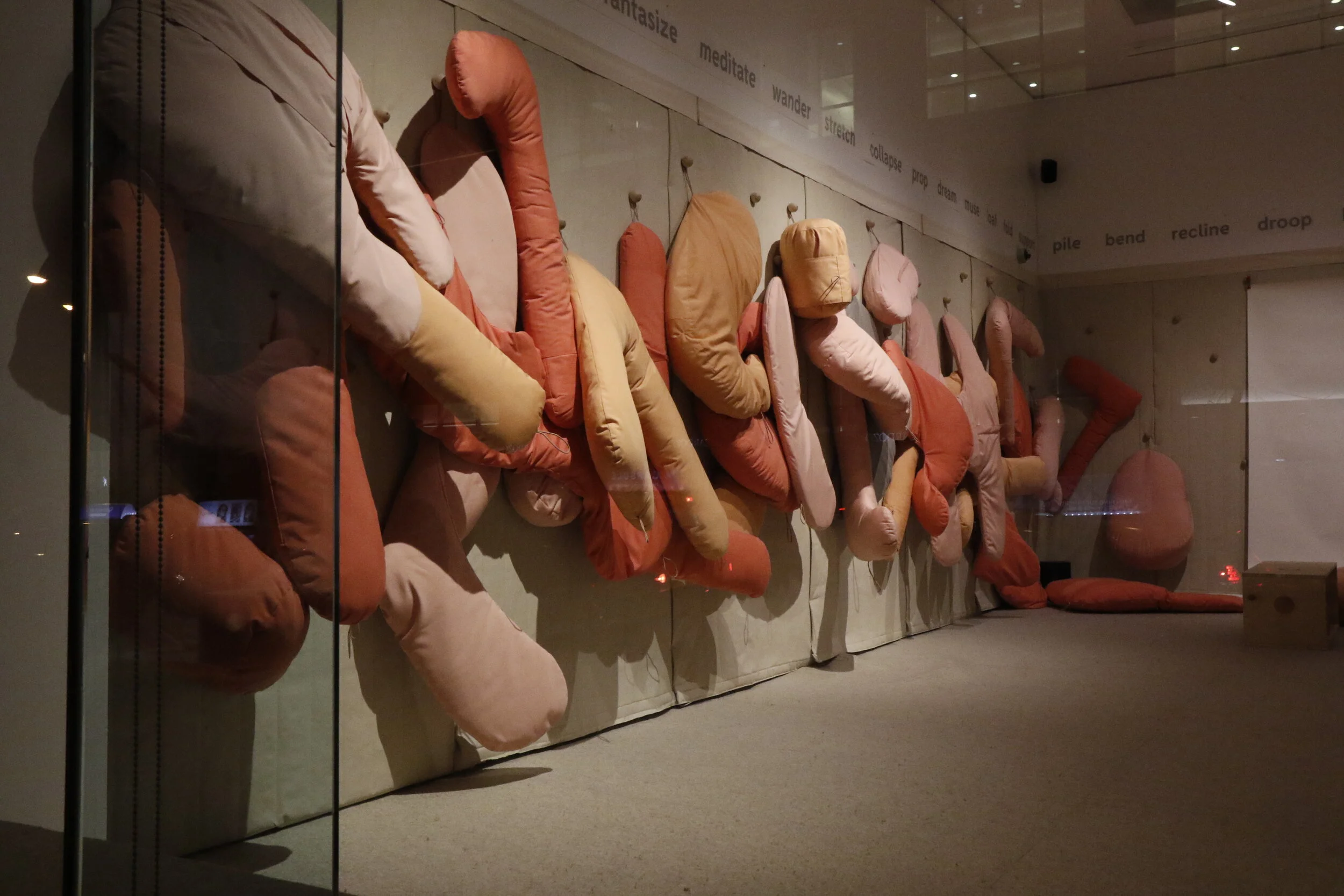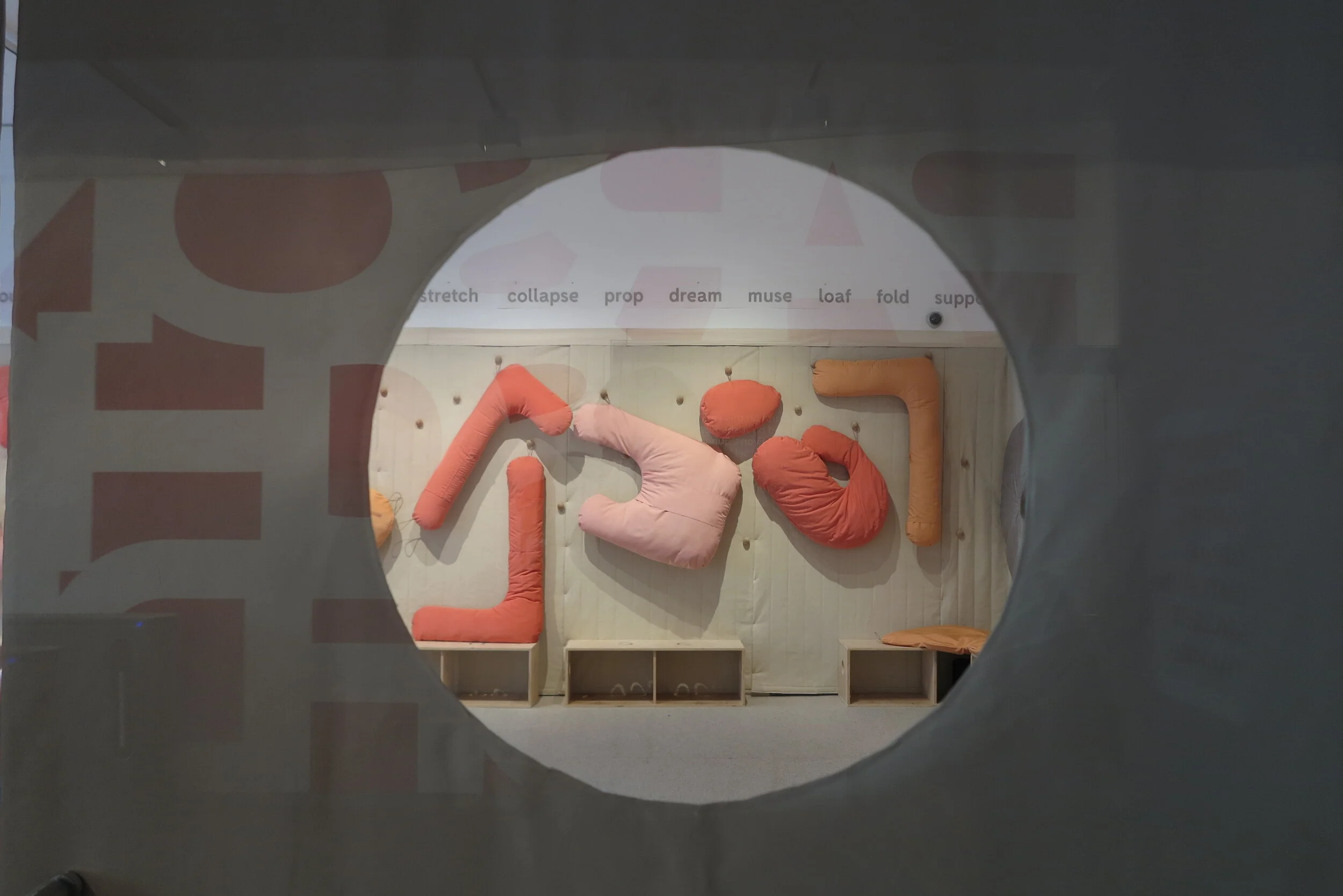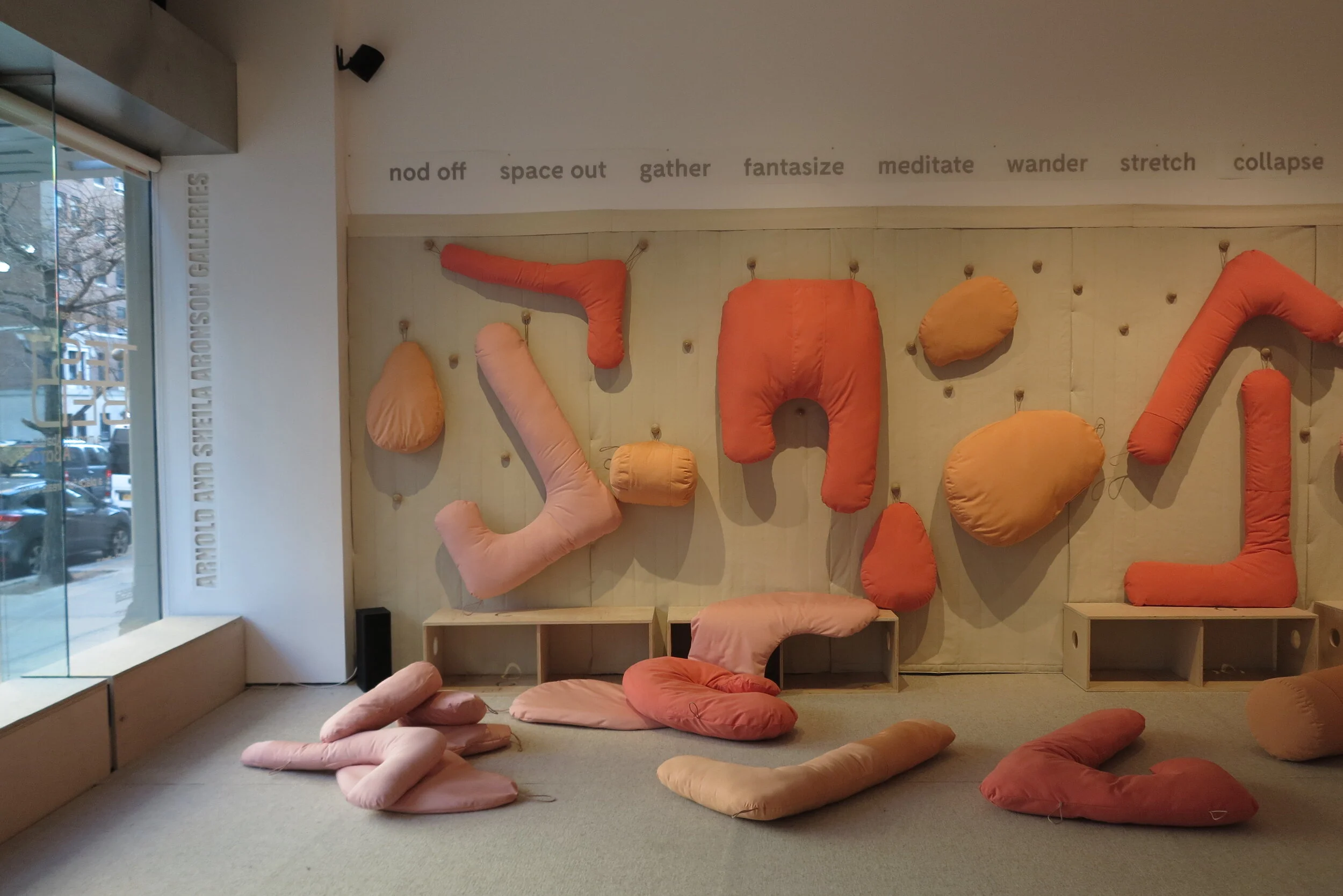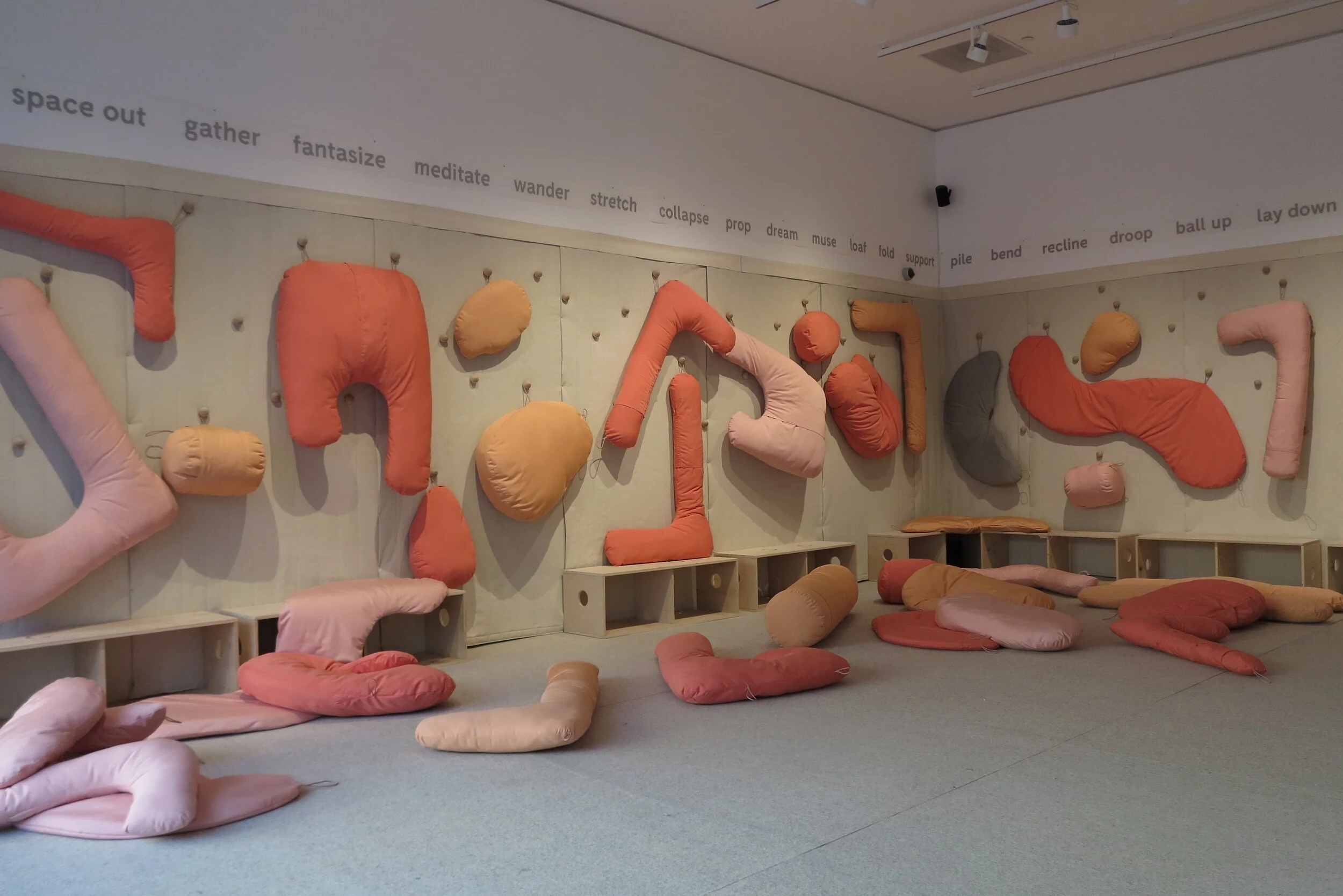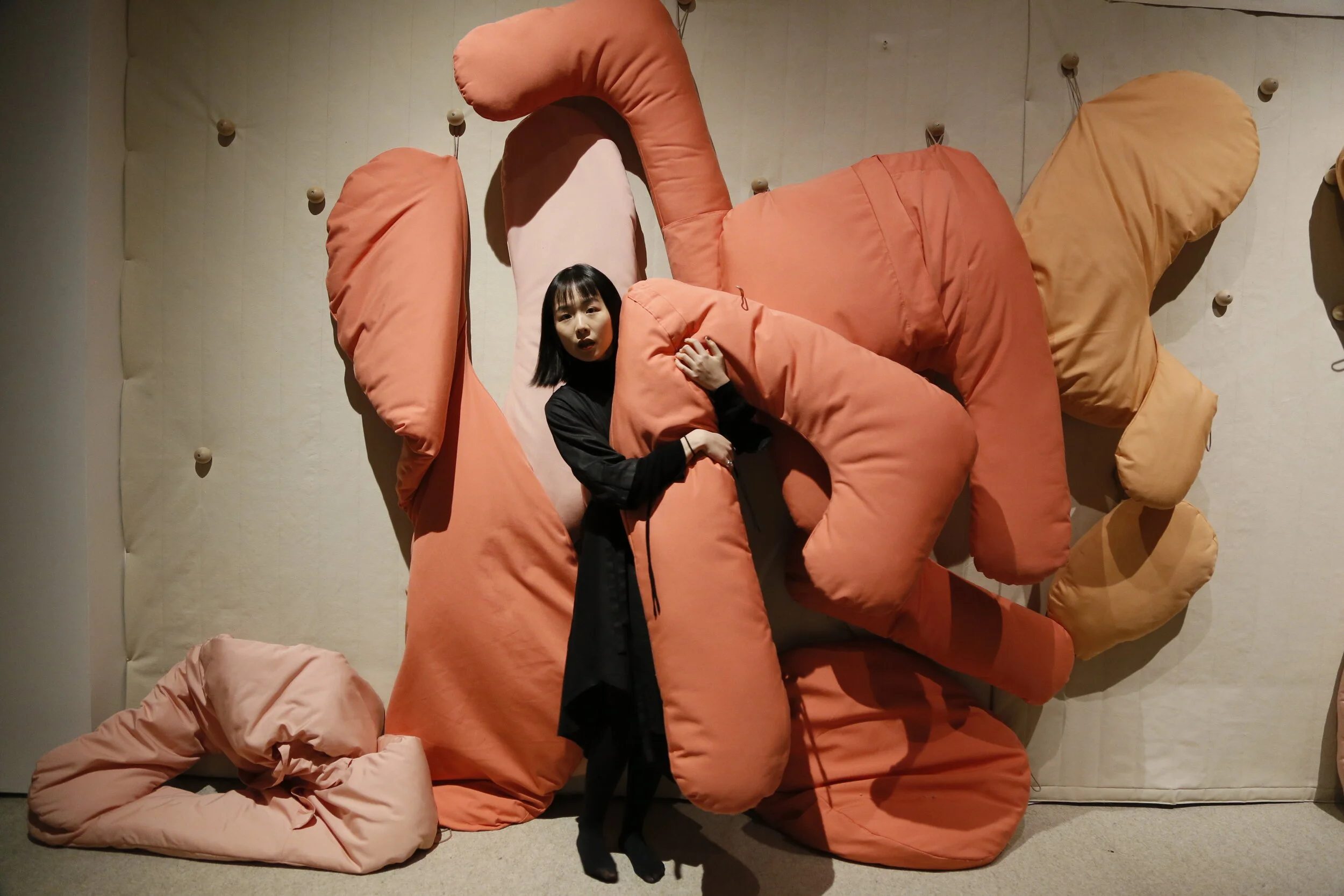TEST BED: a Modern Abaton
Abaton: 1. A place to which access is restricted, especially a sacred space or enclosure; a sanctuary. 2. An enclosure or building attached to a temple of Asclepius, in which supplicants wishing to be cured slept. (OED)
Asclepeion: a complex of sanctuaries and temples overseen by Asclepius, the god of healing. The organization of the Ascleopeion fostered dream incubation, therapeutic sleep, prophetic dreaming, and medicinal healing.
TEST BED: a Modern Abaton is an installation, an exhibition, and a series of fourteen public performances and dialogues on the interaction of space, the slumbering body, and the accessories of sleep. Organized by Pillow Culture and sponsored by the MFA Interior Design Department at the Parsons School of Design, TEST BED was held at Parson’s Aronson Gallery located at 66 Fifth Avenue and 13th St. from February 17 through March 10, 2018.
TEST BED, the installation, transforms the Aronson Gallery into a modern abaton, a space the ancient Greeks dedicated to Asclepius, the god of healing, and devoted to collective therapeutic sleep and prophetic dreaming. TEST BED encourages visitors to engage in self-directed as well as collective repose; to recline, nap, or daydream utilizing “soft tools” – cushions, pillows, headrests, etc. – that are hung on the walls and scattered on the felted gallery floor.
TEST BED performances and events explore sleep topics whose speakers and participants represent a wide range of disciplines including product design, interior design, lighting design, anthropology, psychology, art and performance art, choreography, and folklore, as well as inventors and futurists.
Soundwork:
John Roach has created a new work entitled 90 Minute Cycle, an 8-channel sound work that moves through four stages corresponding to those in an average sleep cycle: N1, N2, N3 and REM. All sound sources used to create the piece were determined by the 70 responses to a survey that asked participants “What sounds help you sleep? What sounds suggest sleep to you?” The structure uses the following characteristics of the four stages to guide the editing process.
CREDITS



